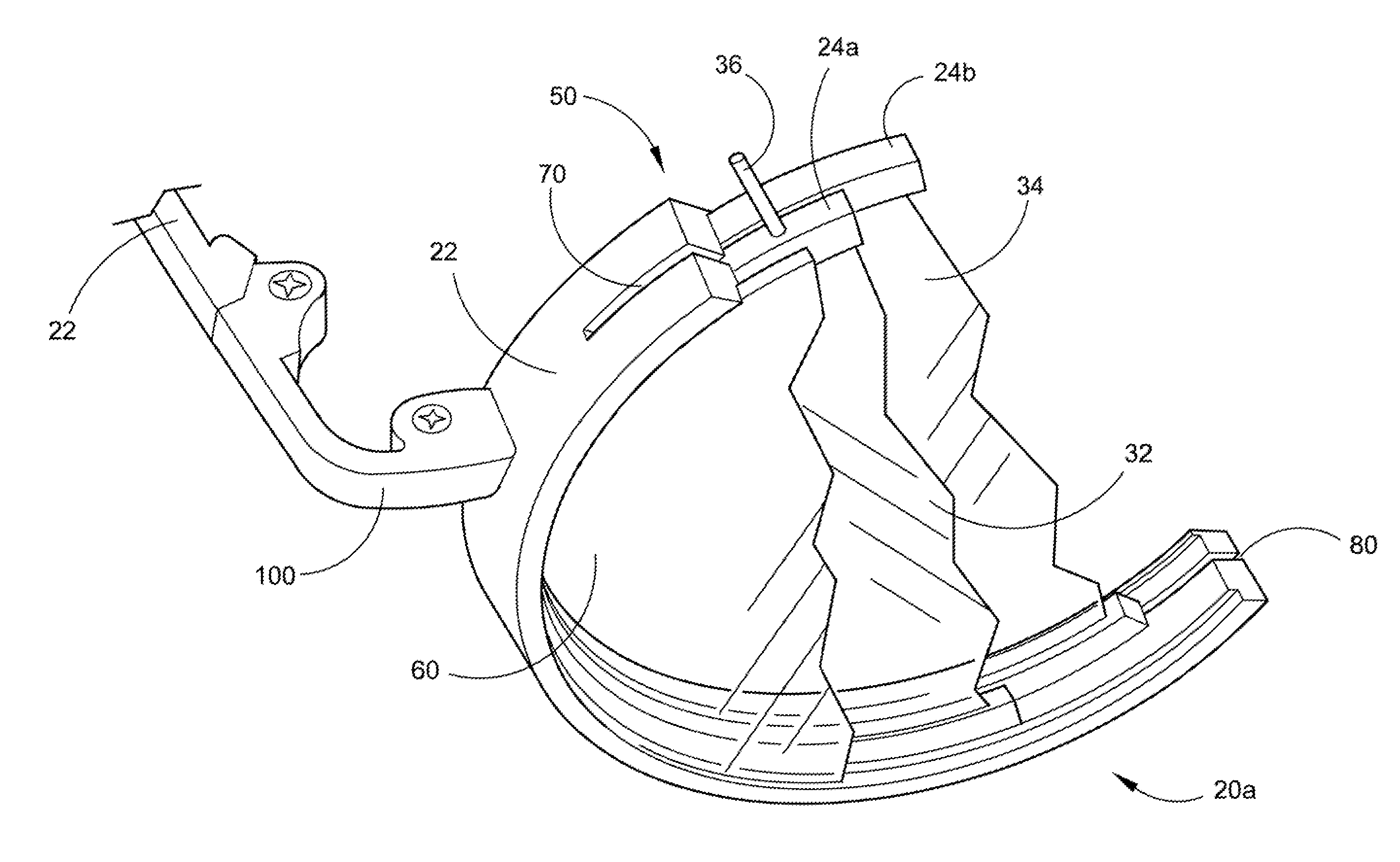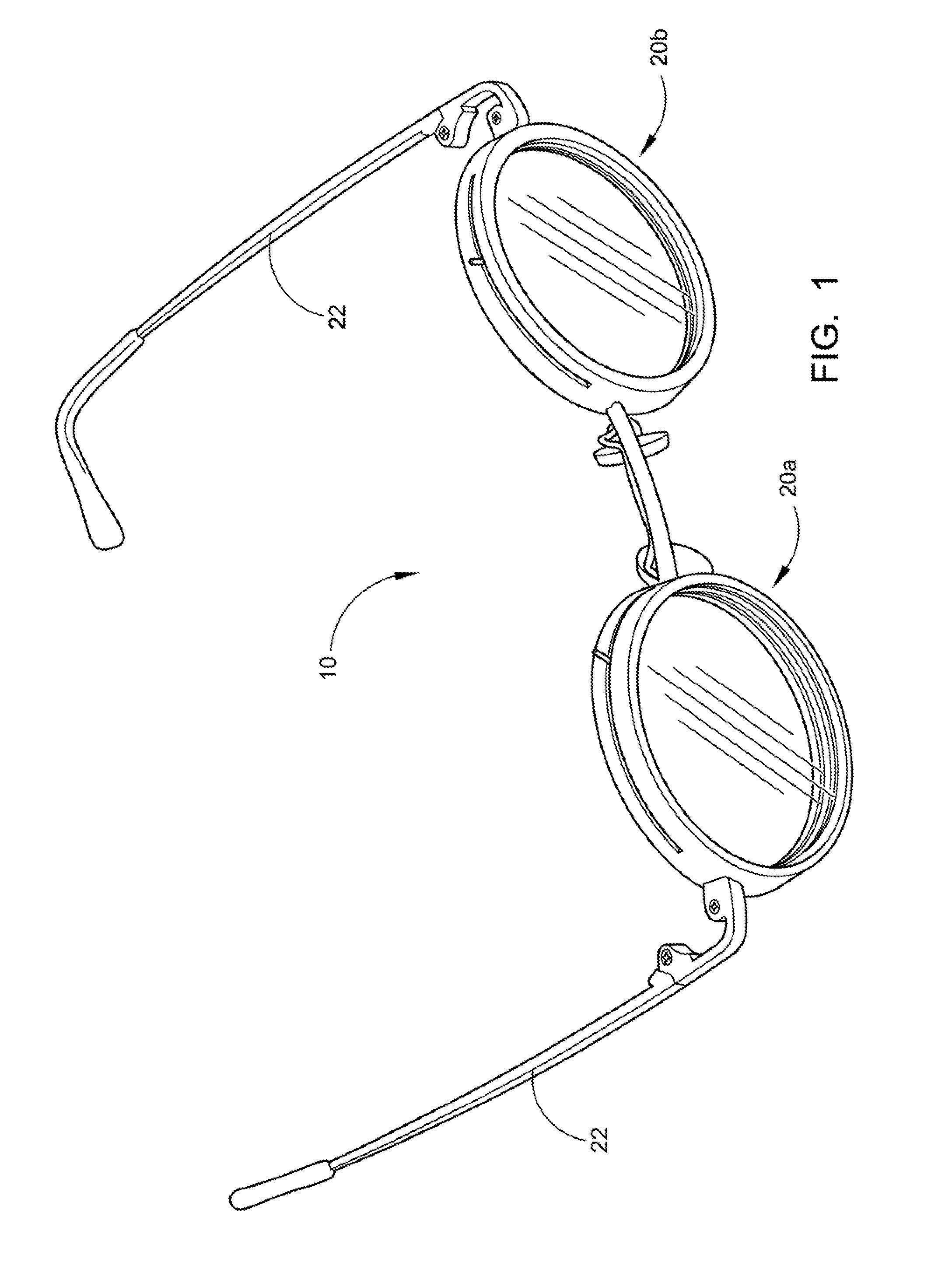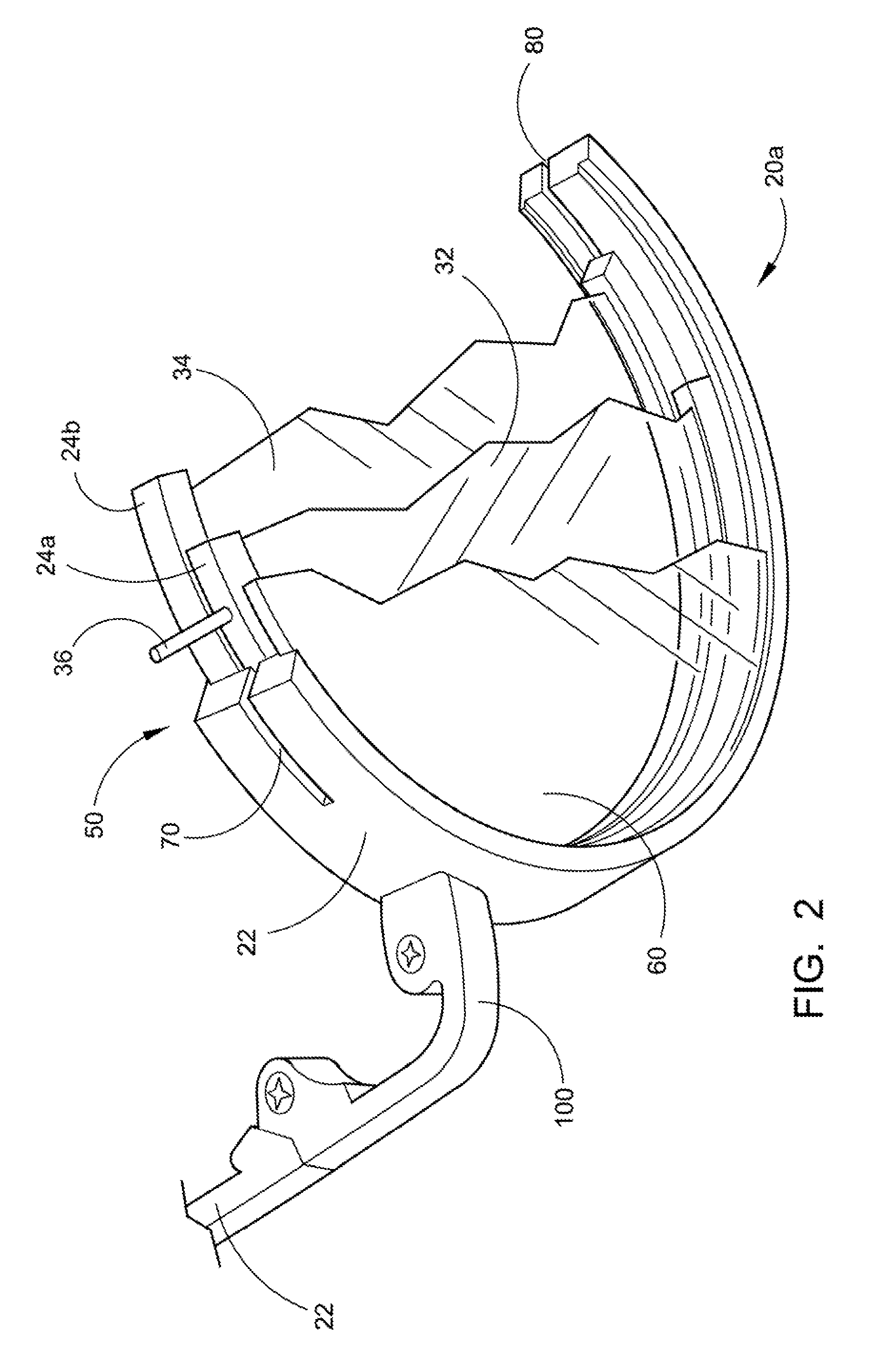[0018]Therefore, it is the overall object of the present invention to provide a novel eyeglass prism
system to eliminate or alleviate the above mentioned conditions. One objective of the present invention is to provide variable prisms to be installed in eyeglasses to relieve patients of strabismus. Another major object is to provide a way for a physician to treat a patient by therapeutically moving the eye globe over a given period of time to a position which will allow for normal and unassisted
binocular vision. An additional objective is to provide the patient with a rotatable pin to adjust the dioptic setting of both prisms in the eyeglasses to optimize
visual acuity when suffering strabismus. Another objective of the present invention is to provide a simple variable prism design to allow relatively inexpensive manufacture and reasonable retail cost to patients. Lastly, another objective is to provide multiple embodiments of the variable prism. To date, and to the knowledge of the Applicants, no such variable prism
system has been invented to treat strabismus.
[0021]There are multiple novel features associated with variable prisms glasses One of these features is the ability of the health care provider to therapeutically treat strabismus in a patient through adjustment of the prisms. Another novel feature is that the patient can make minor adjustments to the prisms using the rotatable pins. An additional novel feature is that with the present invention, strabismus can be greatly alleviated, and in some cases corrected. All these novel features mean there are multiple advantages to millions of people affected by strabismus. They are able to remove
frustration, improve vision, drive and move safely, and potentially eliminate this condition. The above-mentioned difficulties and problems may theoretically be overcome by the present invention. The present invention of variable prisms is intended to be installed in an eyeglass frame. The eyeglasses are typically round and comprised of a total of six lenses, three devoted to each eye. Two of the lenses, one for each eye, are standard prescription corrective lenses that the patient would use to correct vision
clarity. These two lenses may be fixed in place. The four lenses that are novel to the invention are prisms which can be rotated to achieve a desired alignment.IMPROVEMENTS IN THE PRESENT INVENTION
[0022]The current invention is simpler in design in that there are fewer parts. The internal rings, which once surrounded and were glued in place to each prism have been eliminated and are now created in a mold as part of the lens itself. The prism pins which protrude through the primary ring
detent channels are used to rotate the separate prisms. The current invention uses detents incremented in ½ diopter locations in the detent channels. The detents may be reduced to allow the prism pin to rotate more freely into position, or the channels may be smooth. Washers are used of varied thicknesses that control the depth at which the prism pin sits. When a thicker
washer is used, the pin will sit higher, allowing the pin to sit just atop the detents, when the pin is rotated with this thicker
washer in place, the pin will not have to be lifted and placed into the appropriate detents, rather it can be rotated relatively freely and “click” into position. This feature is used when treating a patient who, in the opinion of their health care provider, can rotate the lenses themselves, and is cognizant enough to do so. When a thinner washer is used, the pin will position itself deep in the detents, thus making it more difficult to adjust. A thinner washer will be used when treating children or autistic patients.
[0023]The prism lenses in the new invention are made differently. In the old design the lenses were
cut out of a blank lens to a custom size, this was restricting in many respects, as the shape was limited to a simple circle. The lenses now are cast in a mold, and are significantly different in shape. It is this change that has allowed the
elimination of several parts. The prism lens material is now the highest grade of optical plastic available. The plastic is called OKP4, and has an index of 1.67. With the new design using a higher index plastic, the overall thickness is thinner allowing the use of less material thus making the glasses lighter. A high quality anti-glare
coating is applied to one side of the prism lenses, reducing glare and bright reflections.
[0029]There are six magnets placed in the outer prism lens. The magnets are cylindrical in shape and are used to attach the outer prism to the thick or thin washer. On the side opposite the outer prism is the standard thickness washer. When each prism lens is rotated, the prism lens pin which is attached directly to the prism lens is raised from the detent and the magnets then break contact with the opposing washer and rotate about the circular center-line of the washer. When the correct position is attained, the prism lens pin is then lowered into the correct detent and locked in place by the magnets. This operation differs little with the thick washer, rather than lifting the prism lens pin from its detent, the pin will simply be rotated to its correct location and the magnets will not break contact with the washer. Due to the thickness of the washer, the prism pins will glide across each detent, creating a “clicking” effect. Once the magnets adhere to the outer prism lens, the prism, lens can then be placed into the primary ring. When this operation takes place the prism lens pins attached to the outer prism lens is easily inserted through the detent channel in the primary ring. When in proper position, the outer prism lens will be magnetically attached to the
variable thickness washer and the prism lens pin will be protruding through the channel detent in the primary ring.
 Login to View More
Login to View More  Login to View More
Login to View More 


